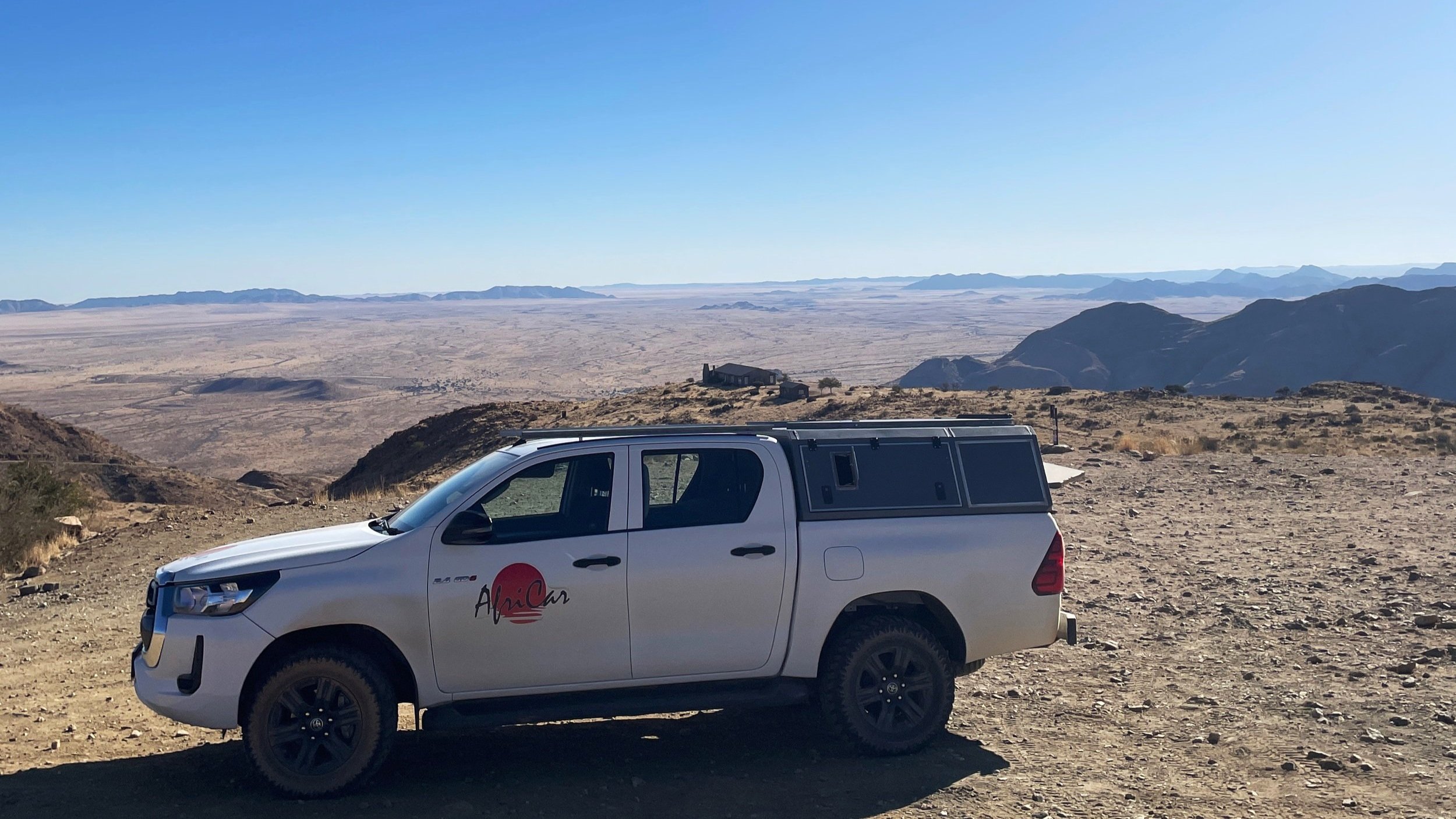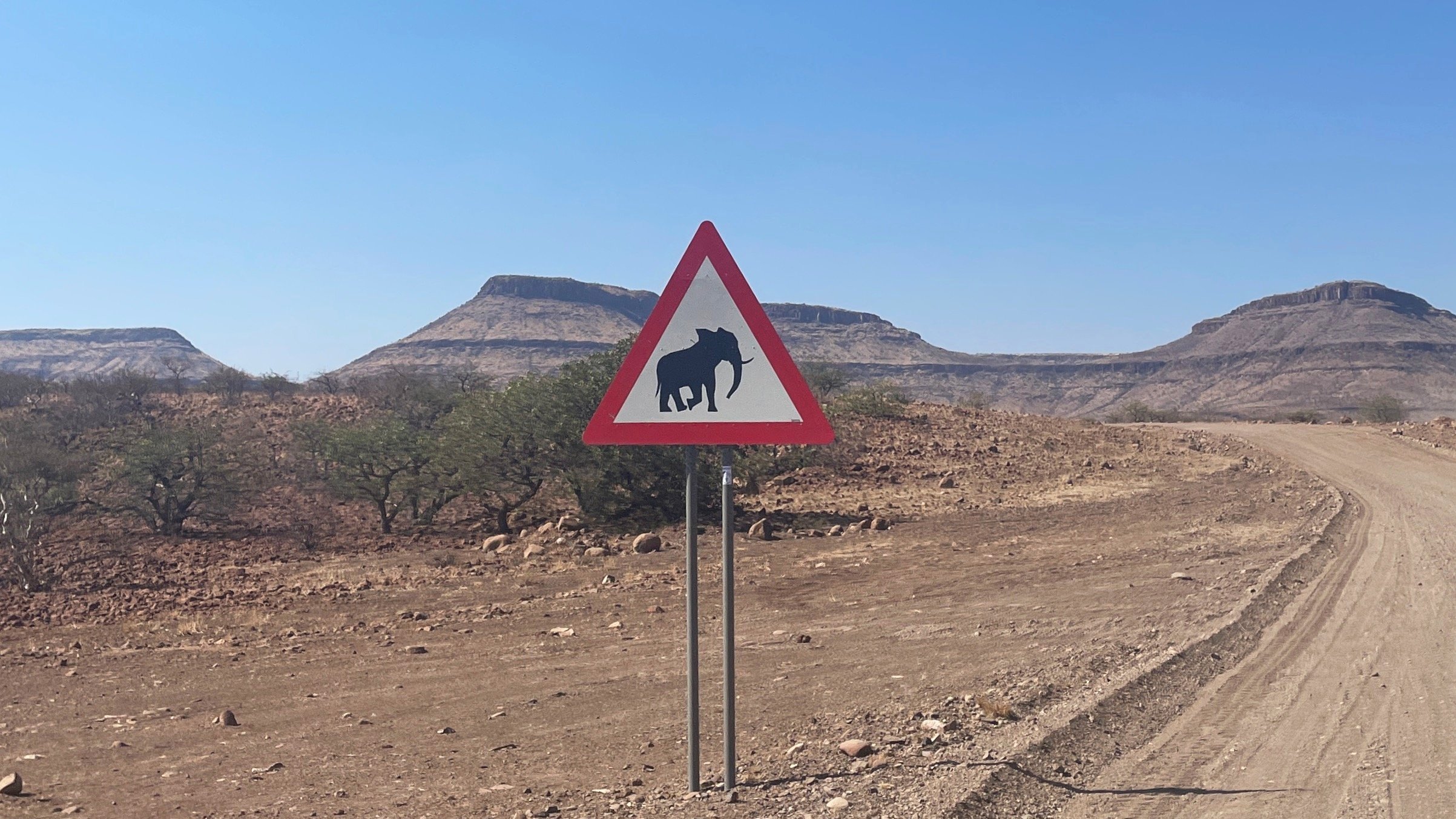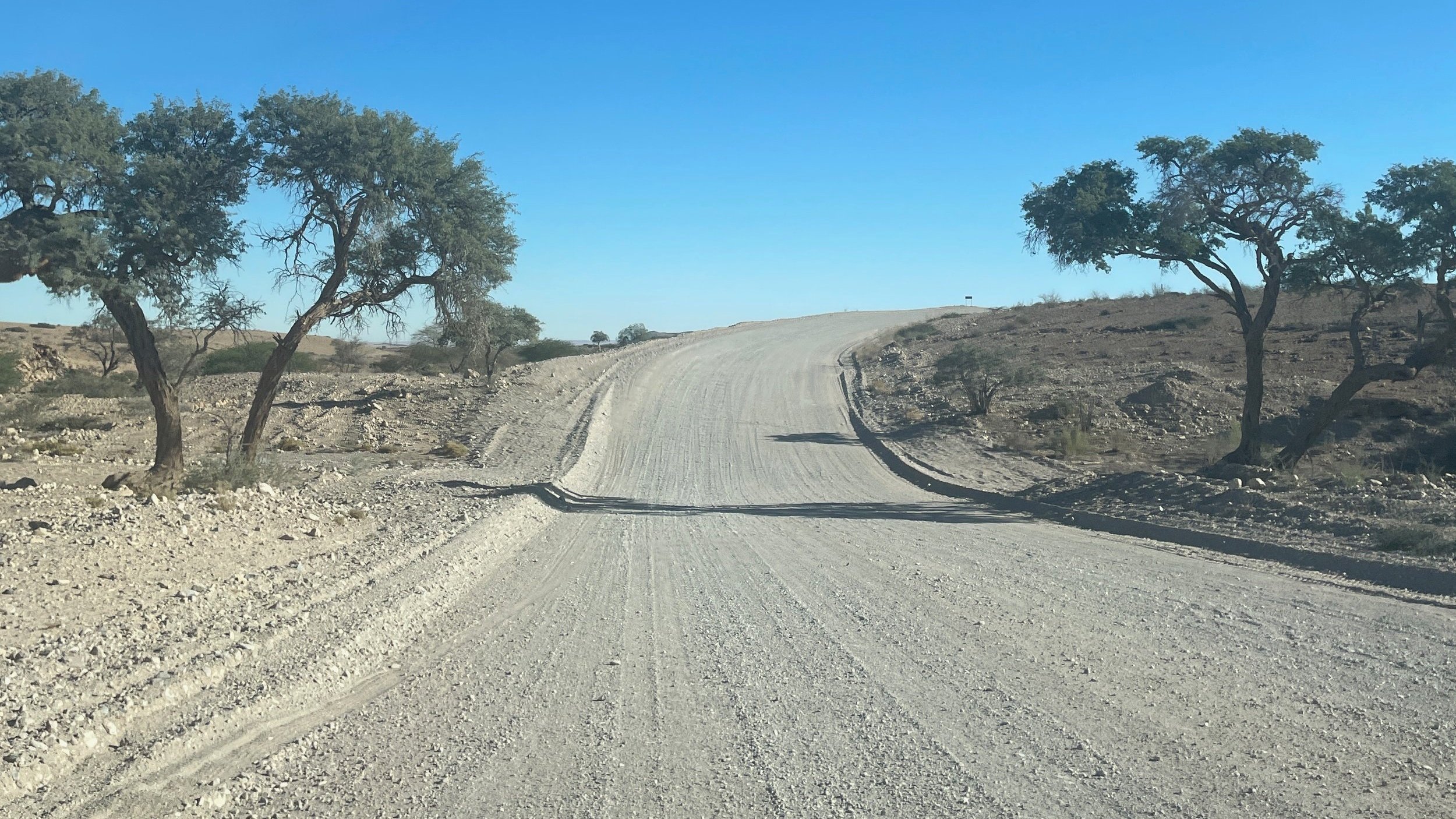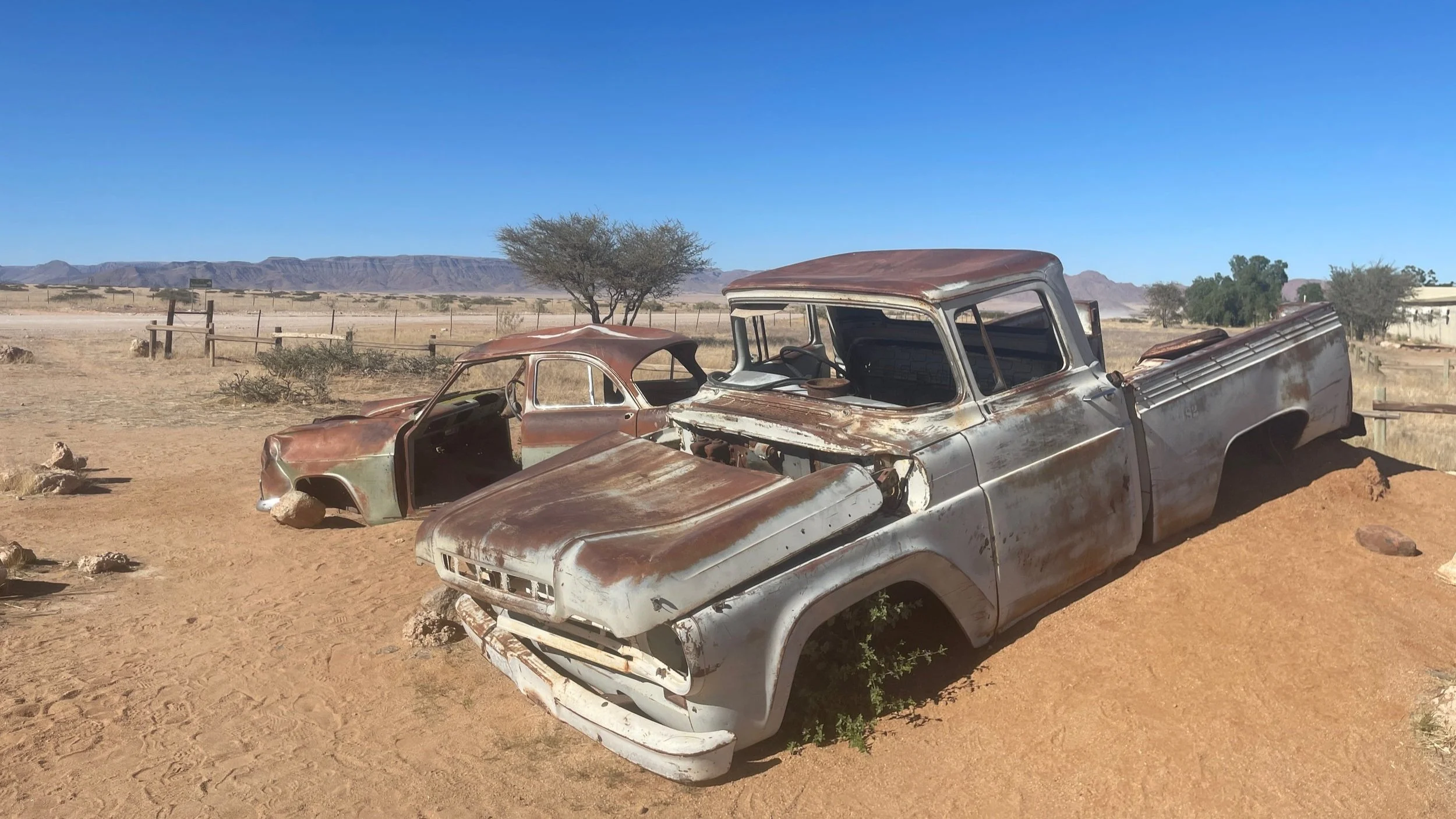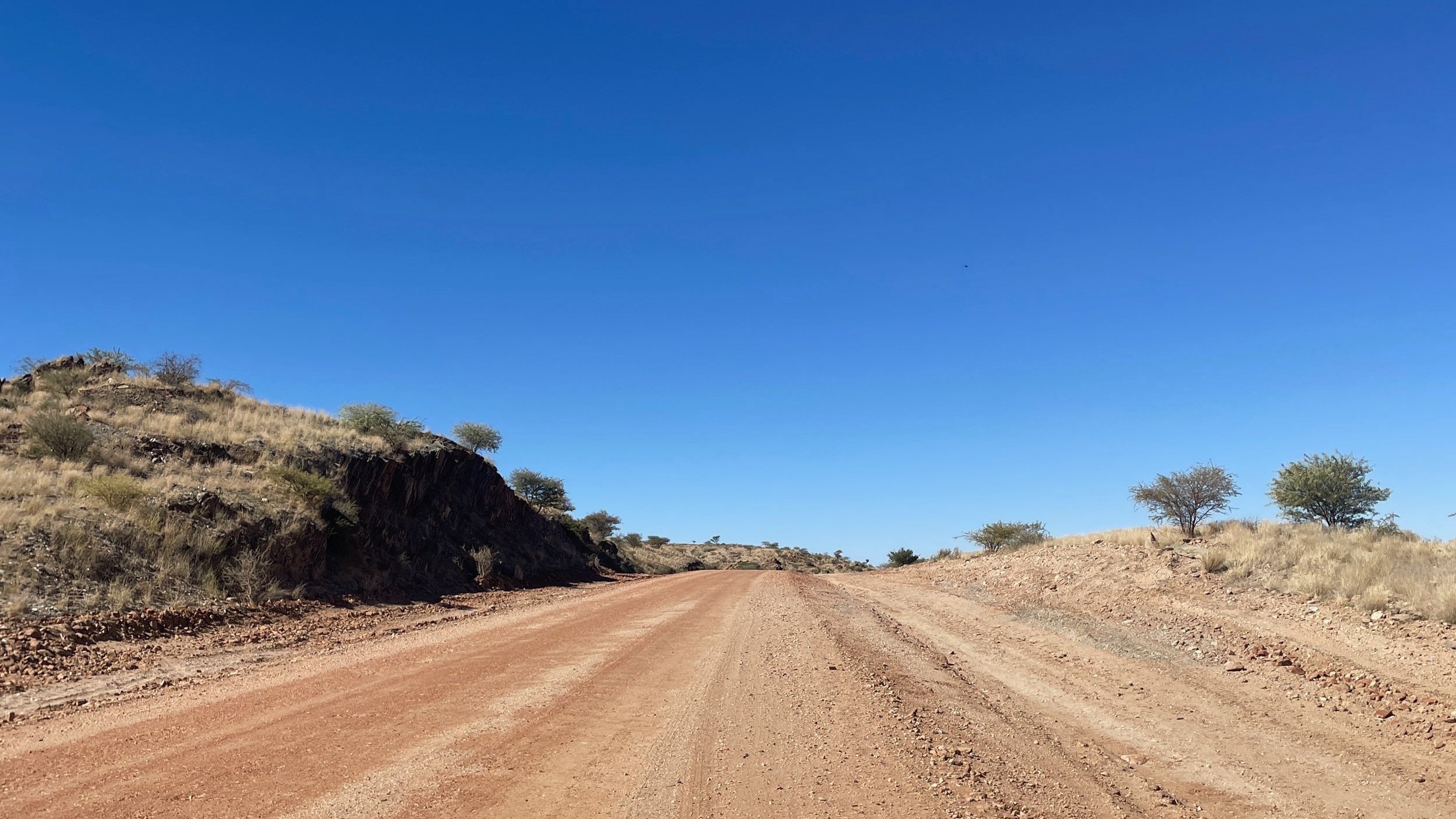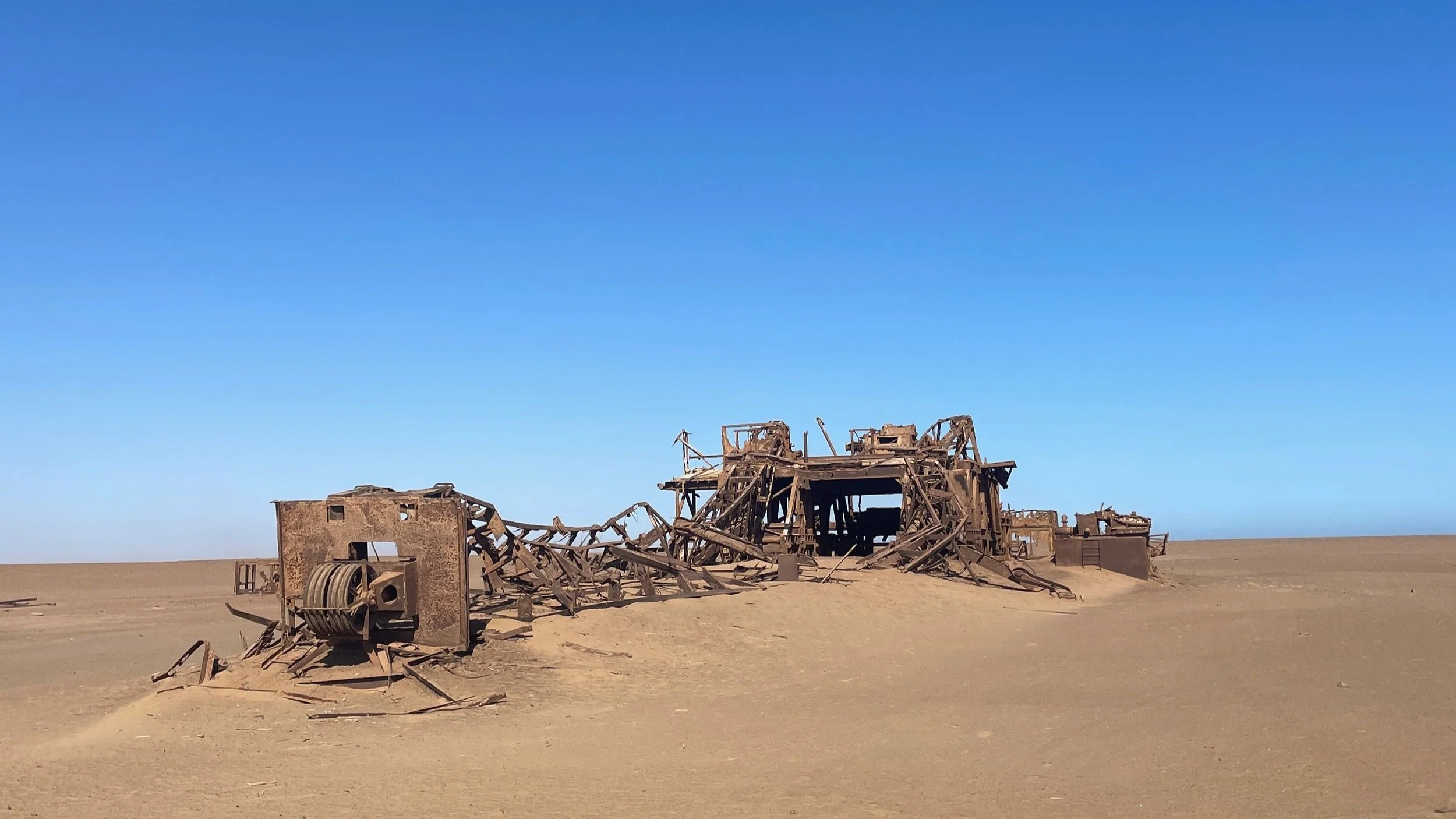Driving in Namibia: the lowdown
Driving in Namibia is one of the best ways to see the country's breathtaking landscapes. But before you hit the open road – and it really is open – you'll need to be prepared. As the second least-densely populated country in the world, Namibia’s roads are long and empty. In many cases they are essentially gravel tracks, and depending on your route, you could be driving for up to six hours a day along them.
There were hours at a time when we didn’t pass another car during our Namibian road trip – and typically one of those times was when we were changing a burst tyre on the deserted Skeleton Coast.
So, before you set out, make sure you’re fully brushed up on everything there is to know about driving in Namibia. Because the chances are, it’s not going to be like anything you’ve experienced before.
Hiring a car in Namibia
We hired a Toyota Hilux 4x4 from Africar, who sent a driver to meet us at the airport and take us to their Windhoek office. Windhoek is about 45 minutes from the airport so choosing a hire car company that offers this service is a huge bonus.
The price of car hire in Namibia
It’s 100% worth forking out for a 4x4 for driving around Namibia, if you can afford it. The roads are not always well maintained and you’re likely to spend a lot of time driving on bumpy, sandy, and gravelly tracks that are not well-suited to smaller vehicles.
For two weeks, our Hilux cost £1272 + the price of Africar’s single vehicle insurance cover for incidents. You can also save money on accommodation by picking a 4x4 that comes with camping equipment that fits onto the top. This also allows you more flexibility in where you stop for the night, and gives you the freedom to set up camp almost anywhere.
Car insurance in Namibia
We used Bettersafe for our comprehensive cover, after extensive research into which companies do and don’t cover trucks. This cover includes tires and damage to the clutch and undercarriage, which many car rental companies don’t include.
So while you can pay more and save research time by getting coverage from your car hire company, we found it cheaper to take out two separate policies to cover everything. Do not skimp on car insurance in Namibia – the rules are strict and there’s a high chance that you’re going to need to claim on your policy. So it’s best to pay more and be covered for everything.
Understand your rental agreement
Check your rental agreement thoroughly - it will say where you can and cannot drive, the condition your car needs to be returned in, what to do in the case of a flat tyre, and have other useful information that will determine how you use your car in Namibia.
Rules of the road in Namibia
In Namibia, cars drive on the left-hand side of the road which makes it easy for us coming from the UK. However, there are rules that you’ll need to read up on. And, like driving in any new country, you should familiarise yourself with Namibian road signs before you set out.
Driving at night in Namibia
Most importantly, driving at night is not allowed outside of towns and cities. This is because animals come towards roads at night as the concrete emanates heat. Since there are hardly any street lights in Namibia, you risk running into an elephant or other large animal on the road at night, which won’t end well for your hire car.
We’ve already mentioned how important it is to be fully covered by insurance in Namibia, but you should also make sure your driving licence is valid. If your license is not in English, it's a good idea to carry an International Driving Permit as well, to ensure that you have valid documentation.
Keep your headlights on
Driving down gravel and sand roads means a lot of dust. It gets everywhere and can impact your visibility when driving. For this reason, it’s required by law that drivers always have their headlights on in Namibia.
Stick to the speed limit
While it’s hard to pick up much speed on bumpy and often pot-holed gravel roads, there are strict speed limits across Namibia. These limits vary between A, B, C, and D roads, but are generally somewhere between 60-120 kmph.
Most hire cars are also fitted with alarms that sound when you go over the speed limit, as well as GPS trackers that will show insurers if you were speeding should anything go wrong. Don’t worry about the trackers though – they’re also there so that, should you get stranded or run into trouble, your hire car company can easily locate you and get someone out to help.
Finding gas in Namibia
Fuel stations can be few and far between in Namibia, so make sure to fill up whenever you have the opportunity. We filled up at almost every gas station we came across, because you never know when the next one might be, or if it will even be open.
Also, be aware that some fuel stations may only accept cash or certain credit cards. There will be workers in the forecourt who fill the car for you, and some will take your payment while others will require you to enter the payment kiosk. If you want to tip, 10-15 NAD is adequate.
Download your route
Even with a Namibian SIM card, the chances that you will always have signal throughout your roadtrip is low. So make sure you have your full route donwlaoded in Google Maps, or whatever app you use, ahead of time. You might also want to print off a version of your map – which won’t be too complicated to read as there are so few roads in the country anyway.
Just in case, keep Namibian emergency numbers, the number of your hire car company, and possibly even your embassy’s contact details in your car. It’s a safe country, but very deserted so the chances of someone happening across you if you break down are low.
It’s also important to book your accommodation well in advance, which will help you plan your route more accurately. In busy travel seasons, lodges can book up quickly and you don’t want to be stranded in a remote village with nowhere to stay.
Stock the car with snacks
Our car came with a cool box which was a lifesaver, as we made lunch in the car almost every day during our two weeks in Namibia. There are hardly any restaurants beyond the lodges you’ll spend the nights in, so it’s important that you always have plenty of water and food with you. Things that are easy to make and eat on your lap, like sliced cheese sandwiches, will probably become a staple during your roadtrip!
Driving the Skeleton Coast
If you’re driving along the Skeleton Coast, be prepared. This amazing stretch of road is almost entirely deserted with no facilities whatsoever. From Swakopmund to Terrace Bay, the drive takes around 6 hours and is long and bumpy. So be sure to fill up the tank with petrol and your cool box with snacks before you set off.
To enter the Skeleton Coast National Park, you need to stop at the gates and acquire a permit. Due to night driving rules in Namibia, you can’t be on the road between sunset and sunrise, so you are only allowed to enter the National Park if you arrive in enough time to make it to the other end before darkness falls. These times will change depending on the daylight hours during your visit. By picking up your permit as you enter and presenting it again as you leave, the guards will always know how many cars are on the road, just in case.
We stopped at a few points along the Skeleton Coast to look at shipwrecks and the remains of an abandoned oil rig. The coast has a wild and slightly eerie feel to it that is nothing like we had experienced before. But it was a lot of fun and definitely something worth incorporating into your trip.
Be prepared and book your room at Terrace Bay Resort well ahead of time, as this is one of the only places you can stay in the northern end of the Skeleton Coast once you have left Swakopmund.
Find out more about our drive through Namibia, our full itinerary here.

